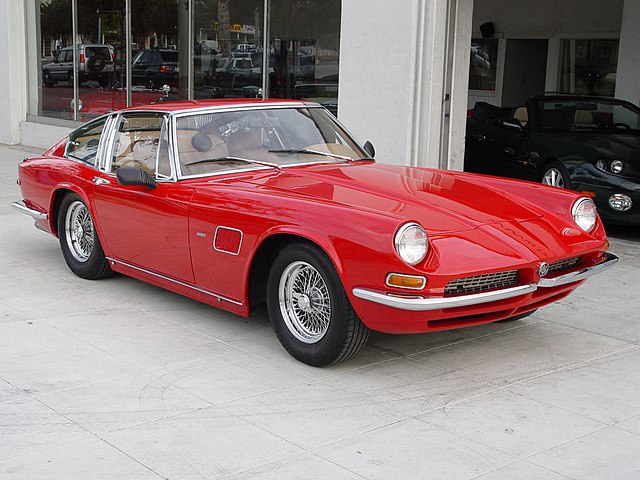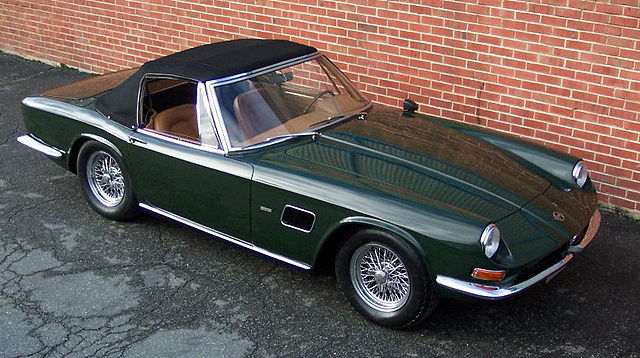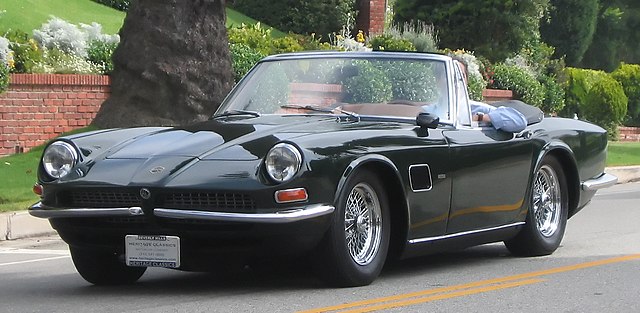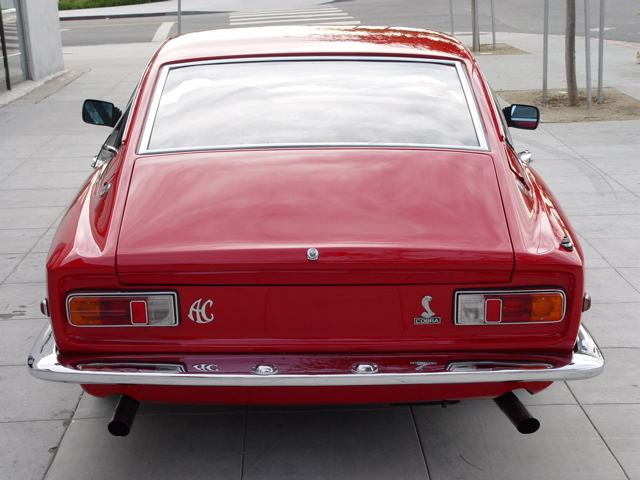
The AC Frua, also known as the AC 428, is a rare and esteemed classic car that embodies a unique blend of British engineering and Italian design flair. Produced between 1965 and 1973, this grand tourer holds a special place in automotive history, representing a collaboration that bridged cultural and technological divides.
Below, we delve into various aspects of the AC Frua, from its conception and design to its legacy in the world of classic automobiles.
Concept and Development

The AC Frua’s journey began in the early 1960s, rooted in AC Cars’ desire to build upon the success of the iconic AC Cobra. The British manufacturer sought to create a grand tourer with the performance of a sports car but with more luxury and comfort. This ambition led to the collaboration with Italian designer Pietro Frua, known for his work with Maserati and other prestigious brands.
Pietro Frua was tasked with designing a stylish and aerodynamic body to complement the robust chassis and engine that AC Cars had developed. The result was a sleek, Italian-styled body mounted on a modified AC Cobra 427 chassis, which promised not only performance but also exclusivity due to its handcrafted nature.
The project was a bold move, blending Italian design principles with British mechanical prowess in a market dominated by established names.
The development phase was marked by challenges, including logistical issues related to the trans-European collaboration. However, these were overcome through meticulous planning and the shared vision of creating a truly distinctive car. The first AC Frua made its debut in 1965, immediately capturing the attention of the automotive world with its elegant lines and promising specifications.
Design and Features

The AC Frua’s design is a testament to the elegance and innovation of the 1960s automotive landscape. Its body, crafted in Italy, featured a long bonnet, short rear deck, and flowing lines that suggested both speed and grace.
The car’s interior was equally impressive, offering luxurious leather seats, wood trim, and a comprehensive set of instruments and controls. Despite its sports car pedigree, the AC Frua was designed with comfort in mind, aiming to provide a refined driving experience.
Under the hood, the AC Frua was powered by a 7.0-liter Ford V8 engine, which was capable of producing up to 345 horsepower. This powerplant was paired with either a 4-speed manual or a 3-speed automatic transmission, allowing the car to achieve impressive performance figures for its time. The combination of a powerful engine, lightweight construction, and sophisticated suspension system resulted in a car that was as exhilarating to drive as it was to behold.
The attention to detail extended to the car’s aerodynamics and handling. The body’s design not only contributed to the vehicle’s aesthetic appeal but also enhanced its performance by reducing drag and improving stability at high speeds. This focus on both form and function was a hallmark of Pietro Frua’s design philosophy and a key factor in the AC Frua’s success.
Production and Variants

The production of the AC Frua was a labor-intensive process, with each unit being hand-assembled in the UK after receiving its body from Italy. This bespoke approach to manufacturing meant that each car could be customized to the owner’s specifications, adding to the exclusivity and allure of the model.
However, it also resulted in a limited production run, with only 81 units built over the course of eight years.
Throughout its production life, the AC Frua was available in two main variants: the coupe and the convertible. The coupe featured a fixed roof with a distinctive rear window design, while the convertible offered a retractable soft top for open-air driving. Despite the differences in body style, both variants shared the same mechanical underpinnings and performance capabilities.
The rarity and customizability of the AC Frua have made it a highly sought-after model among classic car enthusiasts and collectors. Its limited production numbers, coupled with the craftsmanship involved in its assembly, have contributed to its status as a valuable and desirable classic car.
Racing and Performance
While the AC Frua was primarily designed as a grand tourer, its performance characteristics enabled it to compete in various racing events. The car’s powerful engine, combined with its lightweight construction and balanced handling, made it a formidable competitor on the track.
Although it was not developed with a specific focus on racing, the AC Frua achieved respectable results in several competitions, showcasing its versatility and performance capabilities.
The car’s racing endeavors also helped to cement its reputation as a high-performance vehicle. The AC Frua’s ability to hold its own against more established sports cars of the era demonstrated the success of the British-Italian collaboration in creating a car that could excel both on the road and the track.
Legacy and Influence
The AC Frua 428 remains a significant model in the history of classic cars, embodying a successful fusion of British engineering and Italian design. Its legacy is marked by its rarity, performance, and the unique circumstances of its creation. Today, the AC Frua is celebrated not only for its aesthetic appeal and driving dynamics but also for its contribution to the evolution of the grand touring concept.
The influence of the AC Frua extends beyond its immediate impact on the automotive market. It represents an era of innovation and cross-cultural collaboration, showcasing what can be achieved when different traditions and expertise are combined.
The AC Frua continues to inspire automotive enthusiasts and designers, reminding us of the timeless beauty and enduring appeal of classic cars.
In conclusion, the AC Frua 428 stands as a testament to the creativity and ambition of the 1960s automotive industry. Its blend of style, performance, and exclusivity has ensured its place in the annals of automotive history, making it a cherished classic for collectors and enthusiasts alike.
